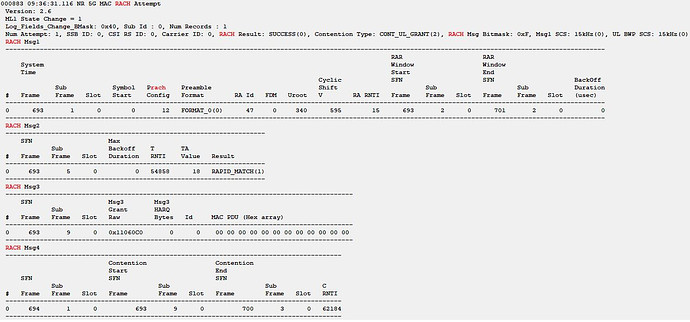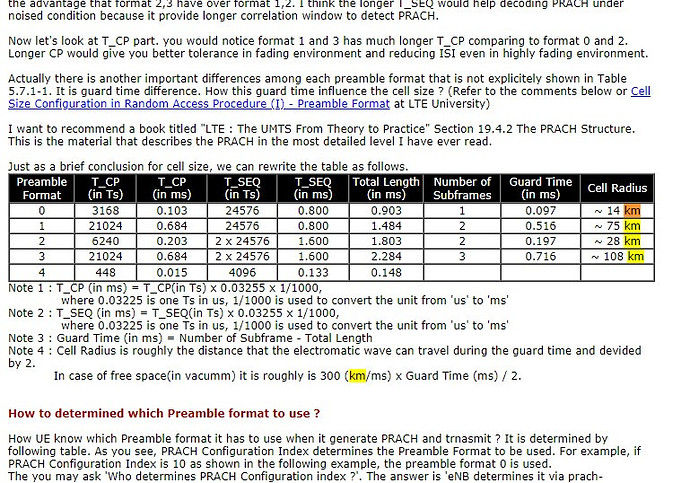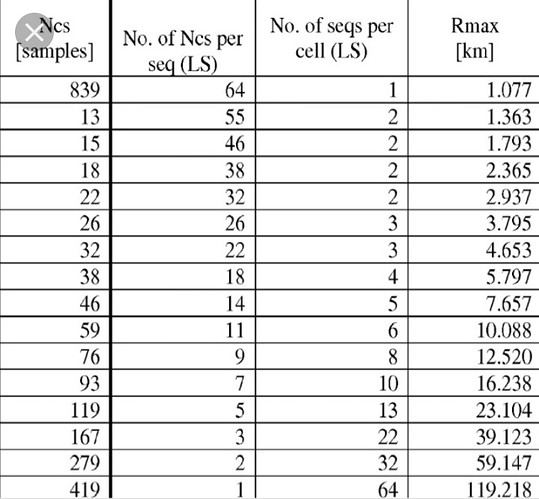Hi Experts,
Can someone explain how cell size is determined from length of preamble format?
As you know, in NR, we have both short and long preambles.
Long preambles are used for larger cells and short ones for small cells.
Cell size is dictated by tilt, height, power and cellradius parameter.
Not by type of preamble.
What about CP?
CP is also a parameter.
Not dictating actual coverage.
Extended CP is available only for 60 KHz SCS and is to be used only for large cells.
I am going through some notes and can see as below:
- Preamble format 0 has CP of 100 μs, ~800 μs preamble , corresponding to 100/ 6.7 ~15 km. (1 ms format)
- Preamble format 1 has CP of 680 μs, ~800 μs preamble, corresponding to 684/ 6.7 ~100 km. (2 ms format)
- Preamble format 2 has CP of 200 μs, repeats the ~800 μs preamble (1.6 ms) corresponding to 203/ 6.7 ~30 km(2ms format)
- Preamble format 3 has CP of 680 μs, repeats the ~800 μs preamble (1.6 ms) corresponding to 684/ 6.7 ~100 km. (3ms format)
Another query: any idea on where this 6.7 is coming from in this calculation?
Yes indeed. But those are recommended parameters.
Your actual coverage is given by tilt, height of antenna, power and cellradius parameter.
Cool, thanks for the info.
And I found a reference for this:
Before the start of random access UE has however achieved downlink synchronization but yet to achieve uplink synchronization and hence there is a definite timing uncertainty associated with each UE’s uplink transmission as the location of the terminal in the cell is not known and this uncertainty is proportional to the cell size and amounts to 6.7µs/km and thats why a guard period is appended in PRACH slot as a part of preamble transmission.
@RFSpecialist yes these antenna parameters may give you actual cell size.
But “maximum accessible cell size” is always limited by rach preamble format, cp and guard period in preamble transmission.
Agree, but those are just to make the cell operates with good parameters.
The coverage/footprint of the cell is no way given by preamble format.
This is correct.
Preamble format defined how much delay is allowed in RACH transmission.
If msg1 from UE is recived at gNB beyond some delay then gNB may detect false preamble sequence or it simply cannot decode it.
Considering parameters (Ncs, Preamble format) we can say that maximum cell range (from RACH PoV) is limited to lower of these two :min(NCS ; preamble format (CP))
He is asking about that “maximum” part only i guess.
And not actual coverage which is controlled by antenna physical parameters.
@RFSpecialist, I didn’t understand correctly
I am also looking for the information like what is random access window time at gNB to feedback to UE again as Msg2.
For example when gNB get the intial preamble from UE as Msg1.
Then how long gNB will wait before it discard.
Normally in LTE it is till 10 ms.
So it might be same funda.
What is value of zczc parameter in your network?
Is it different for less for sites having less inter site distance and more for sites having higher inter site distance? Or same for all clutters?
We have fix value 12 and where inter site distance is more than 8km, we have optimized to 14 to improve rach success rate but not yet tried for less ISD to change from 12 to 8
Here is a typical 5G NR rach scenario:
As you see in the picture above gNodeB replied with msg2 within 3msec from the time UE was sending Msg1.
What max value can be set in NR?
Raresponsewinsize
Is it same as LTE?
It is in RRc reconfig. I see 80 slots in my case.



